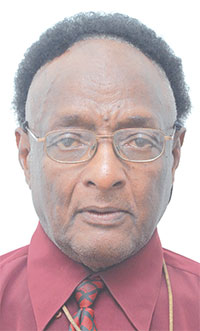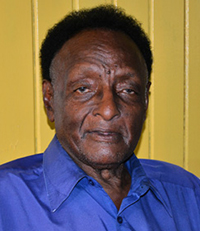Tried by Mag. Full Court & FSC
IN the case of Leacock v. Roopchand, the respondent was sitting as a passenger in the front seat of a motor car.
As the car approached a junction he said to the driver “this is the corner, turn here “.
He then struck the driver’s hands off the steering wheel, took hold of the wheel and turned it in the direction he had indicated.

The car in consequence ran into a traffic island and stopped. The respondent, Roopchand, as charged with dangerous driving and other related, offences, but the charges were dismissed by the magistrate without calling for a defence on the ground that the respondent could not be considered the driver.
On appeal to the Full Court, constituted by Chief Justice J.A Luckhoo and Justice Guya Persaud , that Court held : the respondent’s action in striking the driver’s hands off the steering wheel and then himself turning the wheel provided prima facie evidence that he intended to assume and actually assumed control of the vehicle.
Appeal allowed; case remitted.
{Editorial Note: Reversed on appeal to the Federal Supreme Court.}
Justice Luckhoo delivering the judgment of the Full Court said: The respondent was charged by the appellant, a police constable, with driving a motor vehicle under the influence of drink to such an extent as to be incapable of having proper control of the said vehicle, dangerous driving, driving a motor vehicle when he was not the holder of a driver’s licence, and using a motor vehicle in respect of which, a policy of insurance was not in force in relation to the user thereof.
The first three offences are breaches of the Motor Vehicles and Road Traffic Ordinance, Cap. 280, while the fourth offence is a breach of the Motor Vehicles Insurance (Third Party Risks), Ordinance, Cap. 281. The charges all flow from the same incident and they were taken together with the consent of the respondent. At the close of the case for the prosecution the learned magistrate took the view that there was not enough before him on which he could find that the respondent was the driver of the vehicle at the material time, and he dismissed the charges.
It is against that decision that the appeal has been brought.
On the 12th June, 1961, the respondent engaged one Deonarine, the owner of the hire car, to drive him from place to place in the city. The respondent spent some three hours and 20 minutes drinking with friends at various places. At about 02:00hrs on the 13th June Deonarine drove the car east along Regent Street at the request of the respondent. Earlier, according to Deonarine, he had observed that the respondent appeared to be under the influence of alcohol; Deonarine requested the respondent to sit in the back seat, but the respondent refused and took his seat in front and on Deonarine’s left.
As the car approached the junction of Regent Street and King Streets, and at a point about 15 feet west of King Street, the respondent said to Deonarine “this is the corner, turn here”. The respondent struck the driver’s hands off the steering wheel, and he took hold of the steering wheel and turned it as if to turn right into King Street. As a result of the respondent’s act the car ran into a traffic island and stopped. Deonarine’s evidence which is unchallenged; is to the effect that he did not permit the respondent to turn the steering wheel, nor did he expect the respondent to strike his hands off, even though he was cautious because of the respondent’s drunken condition. From those facts the four charges referred to earlier were laid against the respondent.
The sole question to be determined is whether the respondent was a driver within the meaning of the Ordinance. In s. 2 of the Motor Vehicles and Road Traffic Ordinance, Cap. 280, there appears this definition –
“driver” where a separate person acts as steersman of a motor vehicle, includes that person as well as any other person engaged in the driving of the vehicle and the expression “drive” shall be construed accordingly.”
Having regard to the facts in this case, and to the expression of opinion in Longman v. Valentine that there could be two drivers of one vehicle, we are of the opinion that the magistrate erred in holding that the respondent was not a driver of the vehicle.
The respondent’s action in striking Deonarine’s hands off the steering wheel and then himself turning the steering wheel provided prima facie evidence of the respondent intending to assume, and actually assuming, control of the vehicle.
We hear thereof by calling upon the respondent for a defence and to adjudicate thereon.
Appeal allowed: case remitted.




.jpg)










